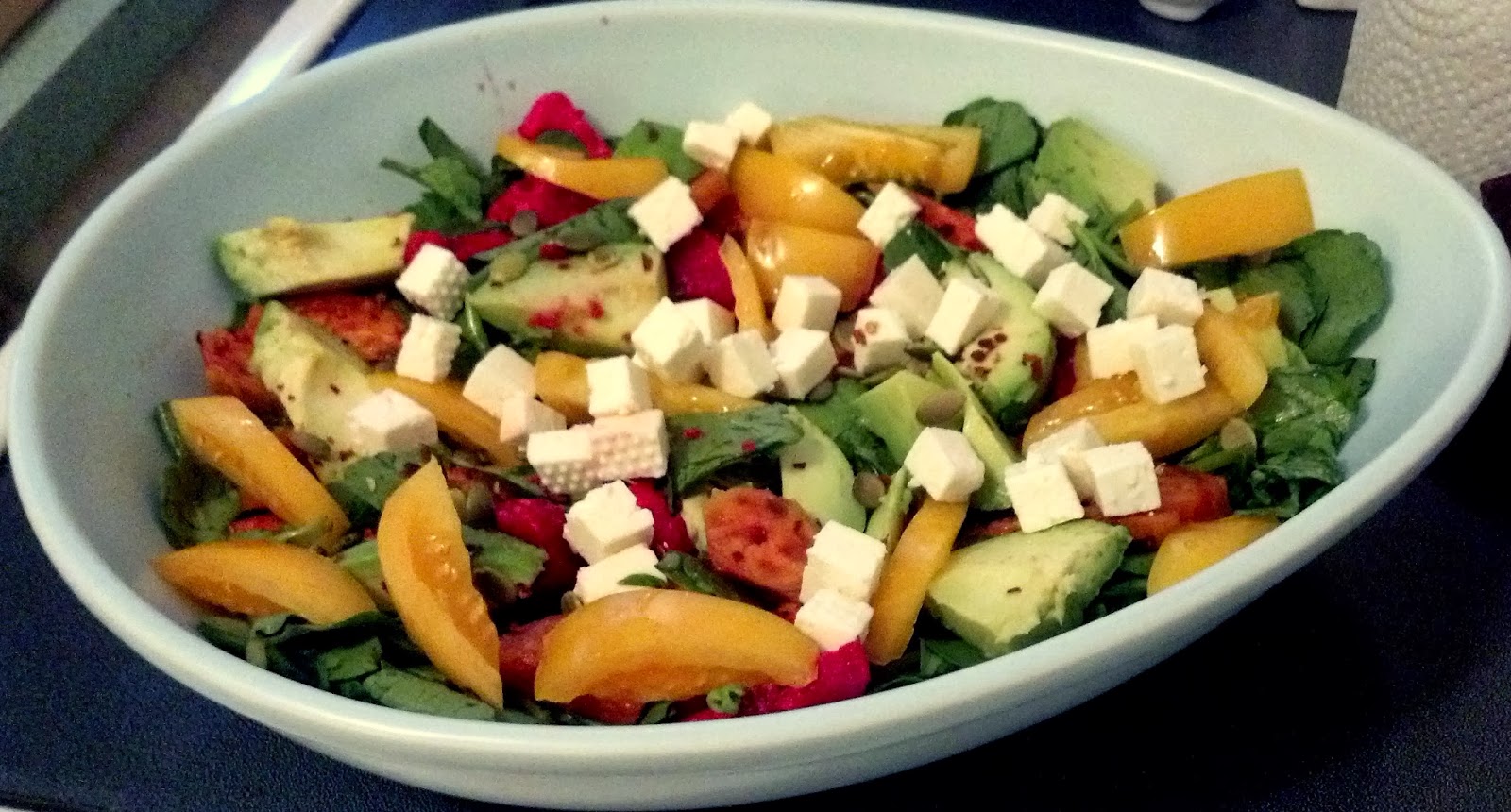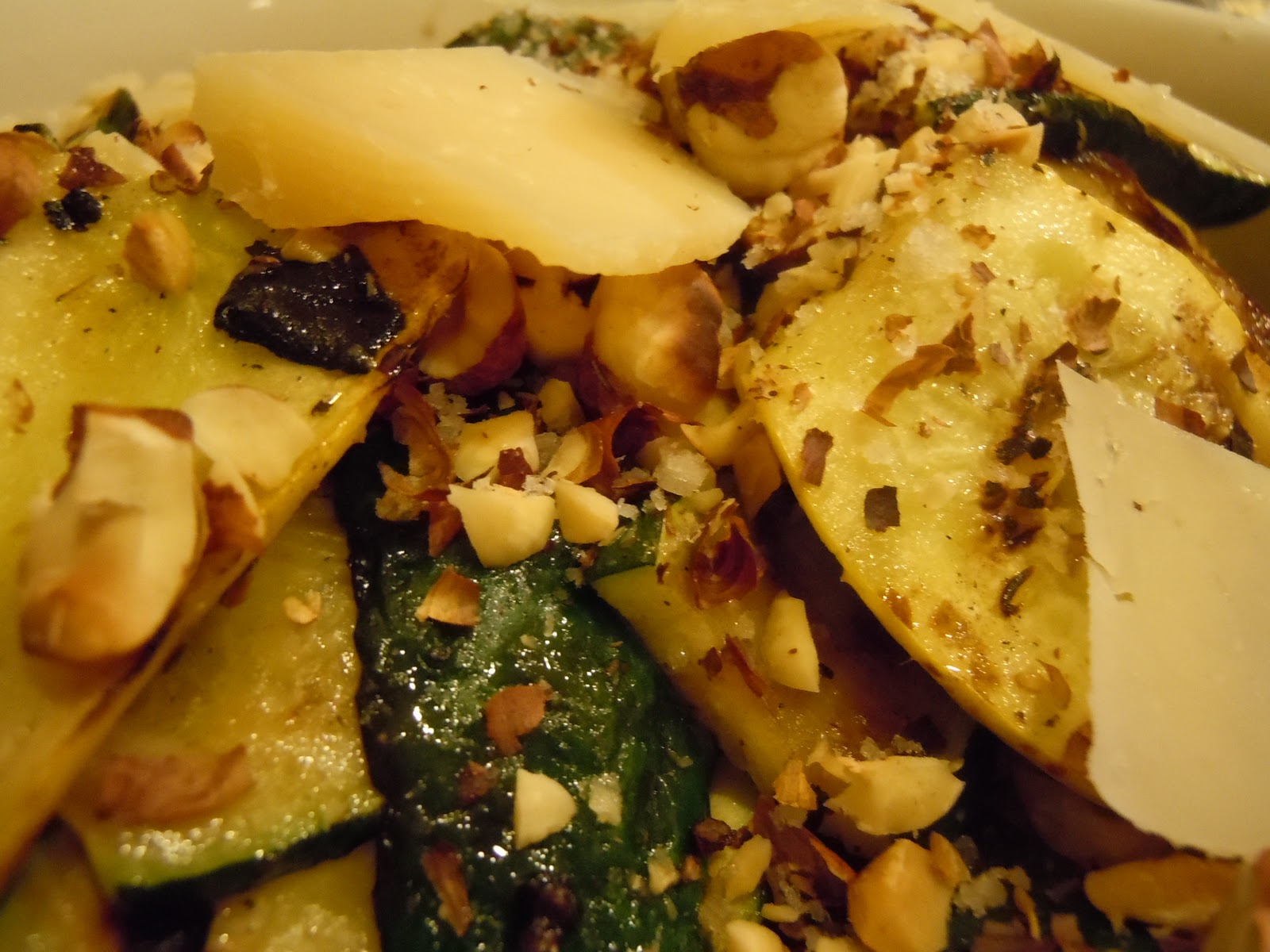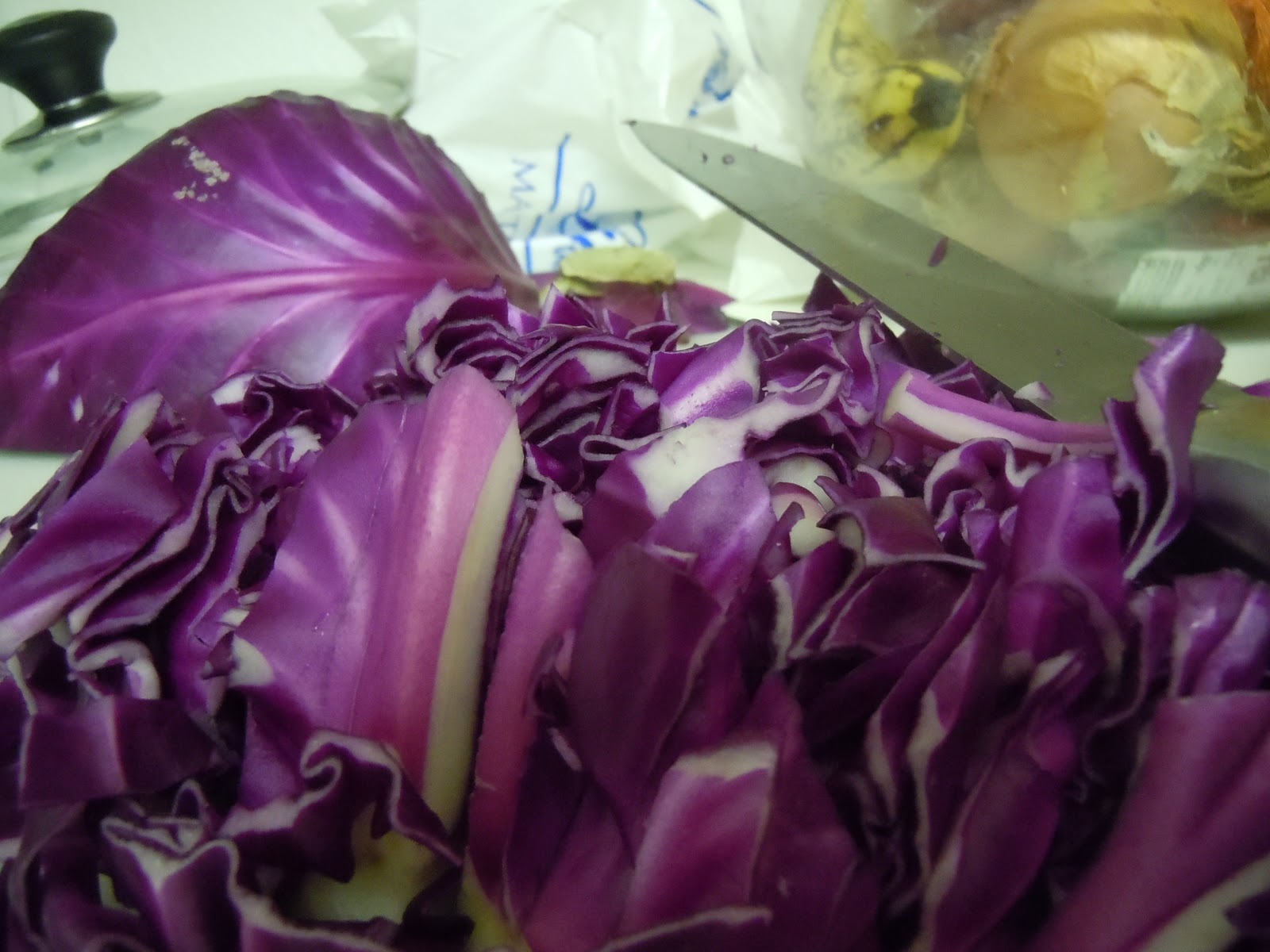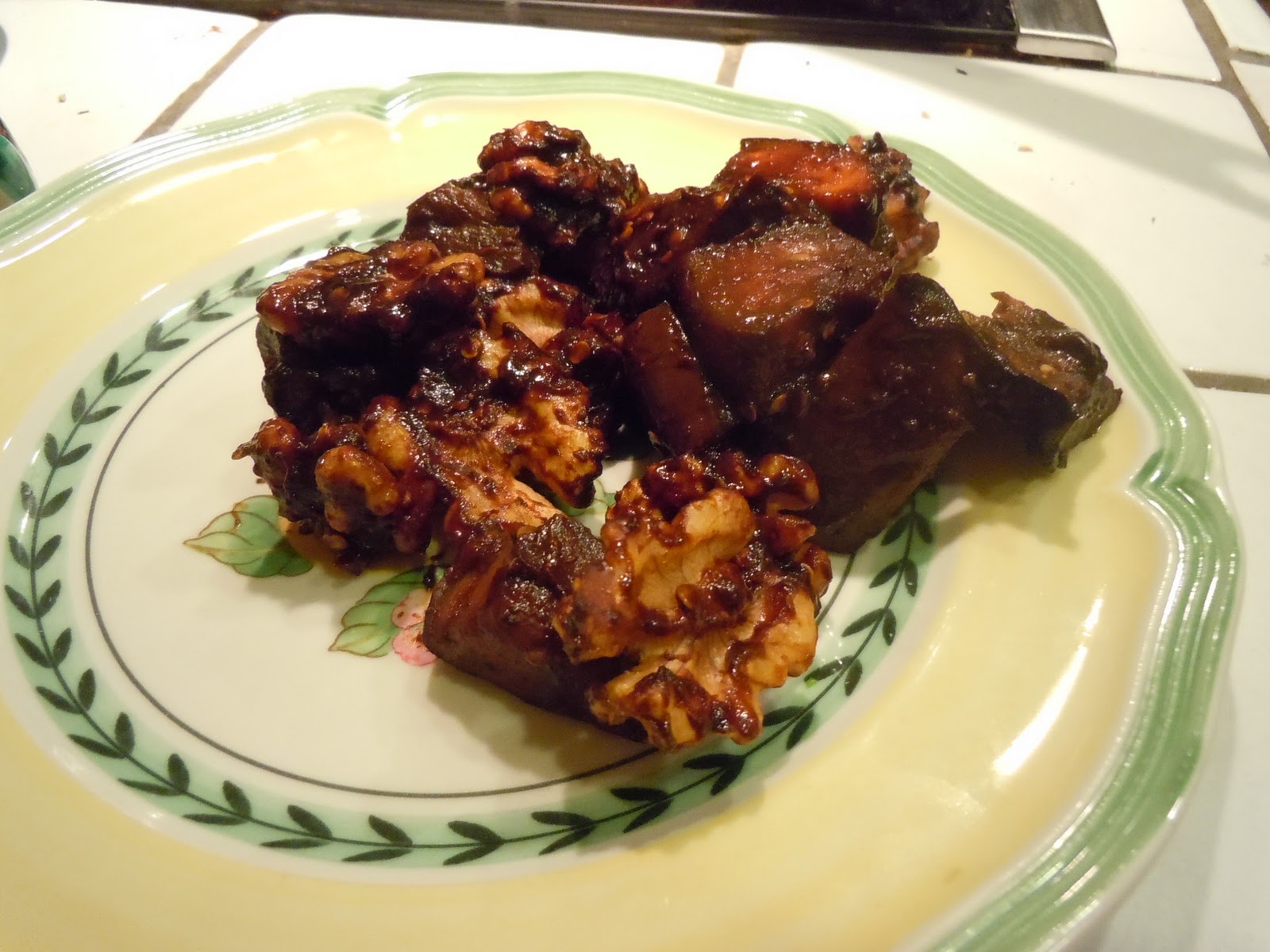This salad is a bit of a stranger in a strange land. Wandering through my local Loblaws (hey, I moved to Canada!), I discovered something I had not imagined I'd ever seen in the Great White North.
Prickly Pears!
Glorious glorious prickly pears!
They called out to be used, as it seemed cactus was not a big ingredient up here in the snowy lands. I couldn't resist.
So I improvised and used them as a variation in a standard sweet/savory combination, much like a traditional watermelon salad, but more in homage to my southwestern roots.
Prickly Pear, Feta, and Watercress Salad
Serves 3-4 as a starter or side salad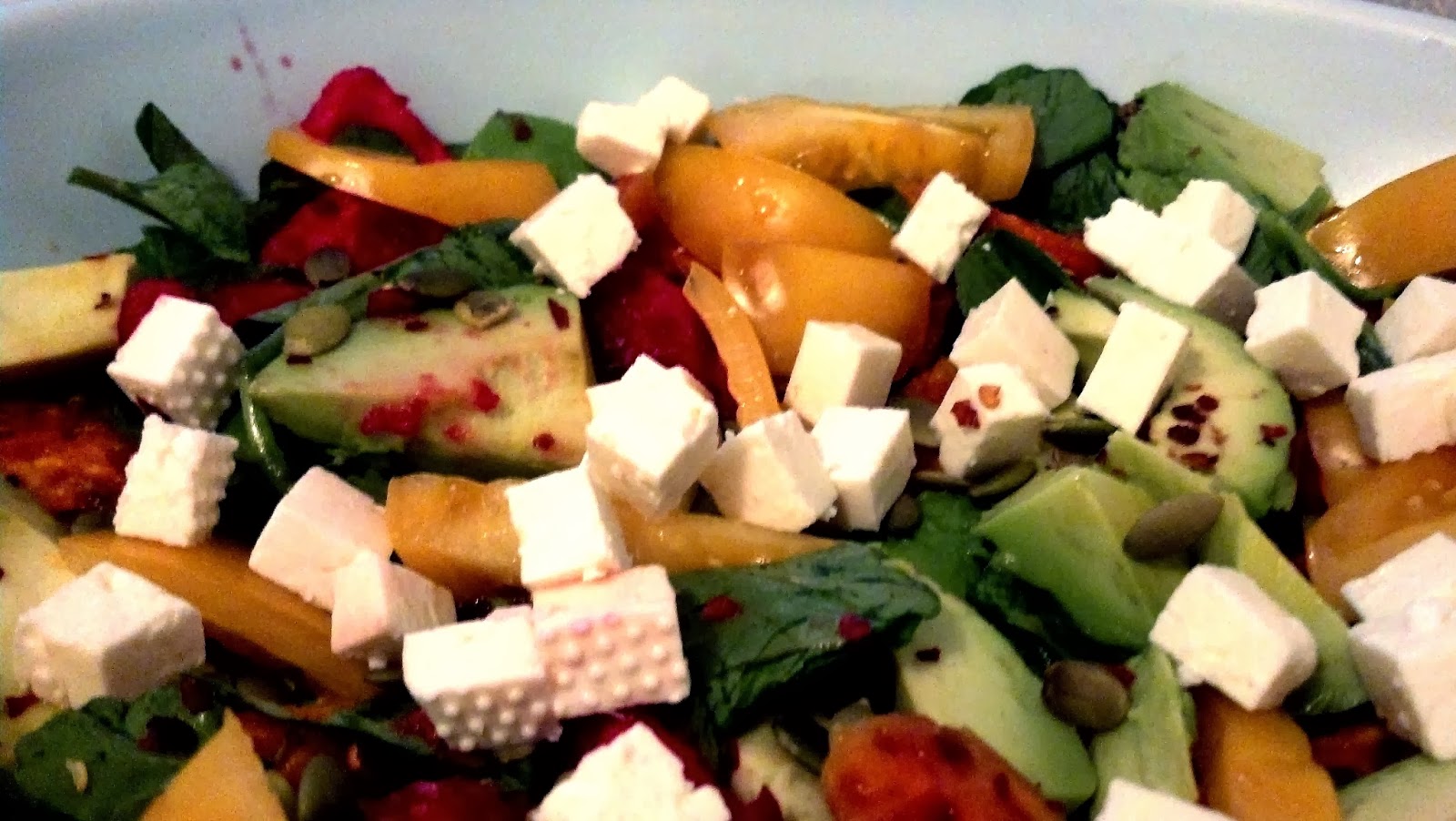
4 ripe prickly pears, peeled (careful of spines!) and cut into half moons
1 medium heirloom tomato, sliced
1 avocado, sliced
2 bunches watercress, washed
100 grams of feta cheese, cubed or crumbled
50 grams of pumpkin seeds (salted or unsalted)
Lime juice (to taste, but approximately from 1 1/2 limes)
Cilantro, washed and chopped
Chili Flakes
Olive Oil
Method
Arrange the watercress at the bottom of the salad bowl. Add avocado, prickly pears, tomato, and feta cheese. Sprinkle the pumpkin seeds on top. Add the chili flakes and cilantro on top, to taste. Right before serving, finish with a squeeze of lime juice over the salad and a drizzle of olive oil.

